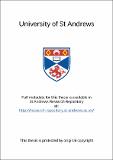Synthesis of labelled desulfoglucosinolates and novel glucosinolate analogues
Abstract
A number of novel deuterated desulfoglucosinolates have been prepared. These have been shown to be suitable internal standards for the quantitative LC-MS analysis of glucosinolates. Use of the deuterated desulfoglucosinolates results in a 100-fold improvement in the sensitivity over existing methods. This should allow improved analysis of leaf surface glucosinolales, including determination of the amount present on a single leaf.
Desulfo-[²H₅]gluconasturtiin was the first compound prepared to establish the methodology. Then two indolyl desulfoglucosinolates were prepared, desulfo-4- [²H₃]methoxyglucobrassicin and desulfo-l-[²H₃]methoxyglucobrassicin, as the corresponding glucosinolates of these derivatives are more potent as oviposition cues when present on the leaf surface. These structures contained deuterium in the aglycone. Finally, β-D-[1-²H₁, 6-²H₂]glucopyranosyl phenethyl thiohydroximate was synthesised where the deuterium was incorporated into the glucose fragment. This synthetic methodology should thus be applicable to any glucosinolate of analytical interest.
Some novel glucosinolates and glucosinolate analogues have been prepared in order to probe the chemical mechanism of glucosinolate cleavage by myrosinase. This reaction gives (3-D-glucose and an aglycone which undergoes Lossen rearrangement to give sulfate and an isothiocyanate. Three novel substituted phenyl glucosinolates were prepared to probe the involvement of the rearrangement in the overall rate of reaction. Changes in the electronic nature of the side chain were expected to alter the rate of rearrangement (p-MeO > H > P-NO₂). However the opposite trend was observed, implying that changes in the pKa of the leaving group were more important. An analogue designed to mimic glucosinolate binding to myrosinase but unable to rearrange was designed and synthesised. Surprisingly this was neither a substrate nor an inhibitor for myrosinase.
Type
Thesis, PhD Doctor of Philosopy
Collections
Items in the St Andrews Research Repository are protected by copyright, with all rights reserved, unless otherwise indicated.

